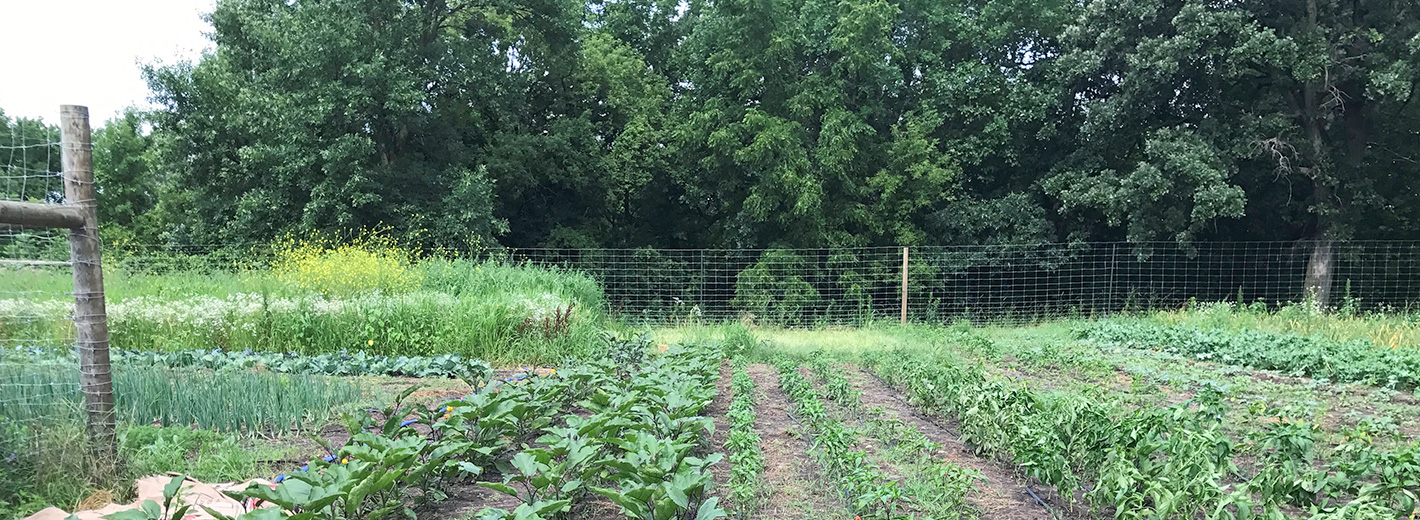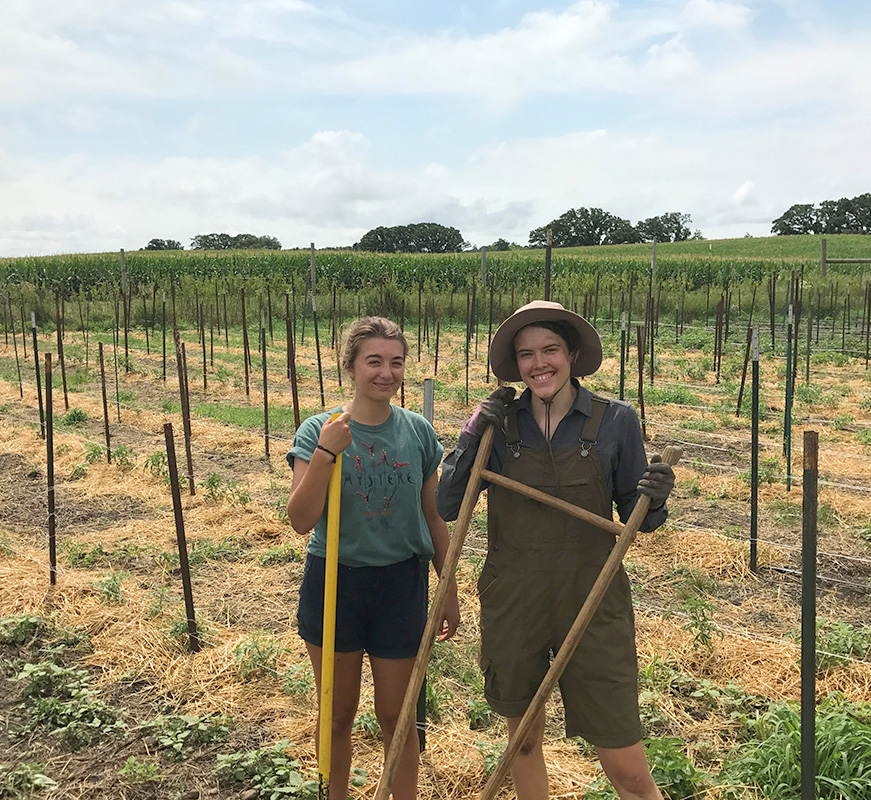
Creating a New Generation of Farmers at Carleton College
- by Peter Todaro
I visited the Carleton Student Organic Farm on a warm, sleepy morning in July, after driving south on Interstate 35 from Minneapolis into Northfield, MN, past the iconic sign proclaiming the town as home to “Cows, Colleges and Contentment.”
As the new coordinator of the Campus Farmers Network, Bon Appétit’s program to connect and promote college and corporate farms throughout the country, I had been looking forward to visiting one of the two campus farms in town, the other being StoGrow at St. Olaf College.

Nicola and Caroline, two thirds of the Carleton Farm team this summer, standing in their upper plot of tomatoes
At Carleton, I met with Caroline Carty and Nicola Lowry, two-thirds of the student team running the farm this summer. They told me the story of agriculture at Carleton, which for much of the 20th century consisted of dairying, and about the legacy of the college’s engagement with what became the existing diversified vegetable farm over the years. In sum, the Carleton Farm in its current manifestation is about 1.75 acres and consists of two separate plots. Approaching the farm from the road, the main site is framed by the famous Carleton Farm House on one side and on the other, a dense sward of pollinator-friendly echinacea, bee balm, and milkweed. We toured the neatly planted rows of brassicas, squashes, and eggplant, which along with a plethora of herbs and other vegetables will all be sold to the Bon Appétit team at Carleton and served to students well into the winter. While we talked, my attention was drawn to a crowd of young summer campers playing games in front of the Farmhouse, an example of the way that college communities always tend to orient themselves around their farms in one way or another, as sites for interdisciplinary learning, food production, or in this case frolicking.
The farming program at Carleton is almost completely student-run, with staff changing year to year, a fact that made the professionalism of the farm even more impressive. Caroline and Nicola explained that a professor in the biology department acts as a farm advisor, assigning readings to ensure they know the theoretical underpinnings of their work, but that mostly they’re on their own.
We buckled down, began planting kohlrabi and chatting. Planting and talking, planting and talking, a rhythmic procedure like many on a farm that can easily become a meditation. Fingers deep in the black earth, asking vernacular farmer questions like: “Have you been dealing with pest issues this year?” “What’s a pocket gopher?” “What were your assigned readings for this summer on the farm?” In answering the last question, it came to light that their readings, The Market Gardener by Jean-Martin Fortier and the New Organic Grower by Eliot Coleman, were ones I too had just begun re-reading as a refresher for my role with the Campus Farmers Network.
These are two classics in the world of sustainable agriculture instruction and technique, the veritable bibles of market gardening, so it’s no surprise that we’d all be reading them at roughly the same time. Yet this realization was a cause for much personal joy; everything clicked at that moment.
It was Coleman who, by challenging the prevailing idea that farms had to “get big or get out,” inspired a new generation of farmers. Coleman built an entirely original system of tools and production to make the small farm dream possible. He railed against what he saw as a lack of care for the health of soil and ecosystem in mainstream agriculture, and promoted his own brand of small-scale, intensive market gardening that was picked up almost two decades later by Fortier and expanded upon. Fortier then became famous as the farmer grossing $140,000 dollars a year on 1.5 acres of land in the cold northern climate of Quebec.
The system that can be cobbled together from the two books requires little initial capital investment, is suited for scant and often marginal acreage, and is beginning-farmer-friendly, leveraging simple, appropriate technologies and eschewing big tractors. The Carleton Farm, despite the change of staff every year, is applying many of these techniques, and it’s paying off. They’ve been profitable for the past four years, and last year alone produced 10,000 pounds of crops!
At a time when the average age of a farmer in the United States hovers around 60 years old, the Carleton Farm, Coleman, and Fortier offer us a model that’s widely implementable on college campuses across the country — one that incubates and propels a desperately needed new generation of farmers to get their hands in the dirt.